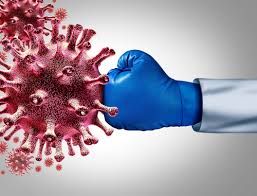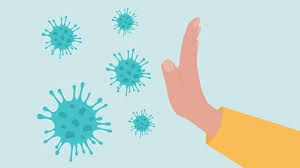Sterilization is widely defined as the elimination of all microorganism existing in a particular environment.
This Includes all microorganisms as well as their spores which is has some resistive feature to less potent reagents.
In the other hand, disinfection is the destruction of most microorganisms but not the highly resistant spores.
Sterilization should be undertaken to protect both patient and the clinician as well.
Barrier protective equipment should be employed in order to protect clinician from any form of disease that the patient have and has the potential of being transmitted to the clinician.
The routinely used barriers are surgical gloves, mouth masks and eye protection safety goggles which are sometimes referred to personal protective equipment (PPE).
These should be discarded after every single use and as such are referred to as disposable equipment.
There are many ways in which infection spread across to a patient from the clinical instruments and as it needs proper management and sterilization of these equipment.
The instrument that penetrate the mucosa must be sterilized as they get in touch with blood vessels when such procedures are carried out.
Some instruments touches the mucosa but do not penetrate it and should be sterilized as well.
They include mouth mirror, probe, college tweezers and so on.
Instruments that requires sterilization due to their close interaction with the oral tissues include the following:
• Mirrors
• Explorers
• Banding and bonding instruments
• Bands
• Pliers
• Ligature guides and so on
However, surfaces touched during the clinical Procedure are considered least critical for the transmission Infectious diseases from the patient to the clinician and vice-versa.
.Surfaces that require disinfection includes the following due to their lower risk of transmitting Infections
• Bracket and band trays
• Air/water syringes holders
• Saliva ejector handles
• Chair control buttons and holders
• Operatory light handles and safety goggles
• Chair armrests and headrests materials
Let's go to the general public know-how on Infection credulity
STEPS INVOLVED IN STERILIZATION AND DISINFECTION
The basic principles remain the same for the two procedures.
These include:
1- Rinsing of the instruments.
Every instrument should be rinsed/washed thoroughly as this will assist in removing all non-sticky debris from the instrument.
2- Debridement with ultrasonic cleaner.
Ultrasonic cleaner through vibratory operating mechanism will remove all materials including sticky debris,cements, or even dried blood from the instrument.This might lasts from 2-15 minutes depending upon the ultrasonic instruments
3- Dry thoroughly
Drying can be done under hot air or using a sponge wiping followed by drying under the fanning. This step is necessary to avoid any damage to the instruments during the next stage of sterilization or disinfection as the case maybe.
METHODS FOR STERILIZATION
1- Employment of Steam Pressure
Majority of dental clinics make use of autoclaves which work on the principle of high temperature of steam in destruction of germs and harmful microbes.
The ideal combinations are 250°C at 15- psi pressure for 15 minutes or 270°C at 30 psi pressure for 3 minutes.
However, it is unacceptable for orthodontic pliers because of the severe corrosion which is usually noticeable at the plier joints.
2- Chemical Vapour Sterilization Formaldehyde,alcohol and water are used at 270°C at 20 to 40 psi pressure for at least 20 minutes.
3- Dry Heat Ovens
This safe and convenient method is still in vogue with clinicians and involves maintaining the temperature at 340°F for 1 hour or 320°F for 2 hours or 250°F for 6 hours or more. This works on the principle of inverse relation between temperature and time. The higher the temperature applied the lesser the required time for sterilization and vice-versa
This approach is ideal for cutters and other sharp instruments as there is less chance for damage due to corrosion.
4- Boiling Water
Boiling water is mainly required for sanitization i.e. the number of microbial contaminants is drastically reduced to safer level or relatively safe levels as laid down by public health requirements index without the destruction of certain viruses and resistant spores.
Immersing the instruments in boiling water at 100 degree Celsius for 30 minutes is most effective for killing bacteria.
An immersion lasting 60 minutes is advisable to compensate for the temperature lag difference in the load during the initial part of the boiling cycle and changes in altitude of location
It is therefore required every 1000 feet increase above sea level, boiling time should be reduced by 5 minutes.
Boilers of several sizes are available for commercial purposes.
The method is not advisable for orthodontic instruments as it really does not sterilize much effectively and the chances of corrosion are maximum due to the water involved.
5-. Salt or Glass Bead Sterilizers
The glass bead sterilizers use small glass beads 1.2 to 1.5 mm in diameter. The heat generated is very high temperature in a very short span of a few seconds.
Like 424 to 450°F(217-232°C) for 3 to 15 seconds but not exceeding 482°F as maximum temperature.
(250°C) is considered sufficient for bands. The larger the instrument the longer the time required for adequate sterilization
Ideal for chair side sterilization of instruments. A narrow, deep well is preferred to a wide shallow well. The instruments should be placed deep and near the sides of the wall for best results to be delivered.
6- Hyperbaric gas (ethylene oxide) sterilization is ideal for instruments that are prone to corrosion
Since itself is highly toxic and has a tendency to retain and hold off the material being sterilized, the sterilized instruments cannot be used immediately and it requires some moments to allow for the gas dissipation.
Depending upon the applied heat sterilization time varies from 4 to 12 hours. It is 12 hours at room temperature and 4 hours at 56°C(2½ to 5½ hours at temperatures ranging from 125 to 135 °F with a relative humidity at 40 to 80% index).
METHODS OF DISINFECTION
1- Activated Glutaraldehyde of 2% concentration is one of the most widely used disinfection agents in dental care clinics.
It has a non-staining properties and does not cause corrosion.
Instruments should be completely immersed in it for about 10 minutes for a disinfection and for like 10 hours at a pH of 7.5 up to 8.5 so as to achieve sterilization.
The instruments need to be washed thoroughly with sterile water before use after removing from this reagent to avoid toxicity associated with its potency
2- QAC (Quaternary Ammonium Compound)
Exposure to this compound reduces the surface tension between the bacteria and any surface in contact, thus disrupting the bacterial cell wall.
It is used routinely for hand instruments disinfection as the metal remains bright and does not show any indication of corrosion.
These compounds also have a pleasant odor and a short-time cycle of activity. They are rendered inactive and useless when contacted with soap lather and some organic matters.
They also have a limited effectiveness against gram-negative organisms, spores and viruses.
3- Phenol
This compound in high concentration is a fast cellular poison that infuses through the bacterial cell wall and precipitates the cell protein of most bacteria.
Phenolic solutions are not sporicidal but are lethal against tuberculose bacteria and viruses. They are good germicide reagents for floors, tabletops, mats, chairs and so on
4- Alcohol
Alcohol is a moderate disinfectant. Its mechanism of action is similarly as QAC and disrupts the bacterial cell wall and protolyse it. Isopropyl alcohol is majorly employed in 70 percent aqueous solution and is more effective than ethyl alcohol.
Ethyl alcohol (70-95%) is effective against vegetative organisms and tubercle bacilli but both are ineffective against spores. It can cause rusting of metal instruments.
Alcohols become ineffective as soon as they evaporated off the surface to which they were applied due to their high volatility.
5- Chlorine
It is used in aqueous solution and even in water treatment for killing of germs. In minute quantities is known to be rapidly bactericidal.
Its mechanism of action is still not exactly known. It is a strong halogen and its aqueous solution is unstable and has to be changed daily. It has the potential to corrode metals and soften plastic materials.
6- Iodine and Idophors
Iodine is a disinfectant that known to be faster in onset of action than QAC or Chlorine. Free iodine reacts and forms salts with the bacterial protein thus killing off the cell.
Concentrated iodine is mixed or softened with
distilled water to form a disinfectant solution.
HAND DISINFECTION
Ideally, it is advised to wear gloves. In the absence of gloves availablity simply disinfect by hands washing for at least 20 seconds with 10 percent povidone iodine, or 4 percent chlorhexidine or 4 percent isopropanol, or any other appropriate alcoholic antiseptic solutions with less potent level.
Though bare hands should not be made to contact patient blood or saliva to avoid possibility of cross infection.
Adequate and necessary precautions should be observed at all moments to prevent infections and protect both patient and dental personnel from infectious disease transmission.
It is important to orient dental students, staff and form protocols with proper illustrative charts across the dental clinic vicinity which should be strictly adhered to, in order to maintain and achieve a safe and realistic infection control programs throughout every session of dental procedures.
That's all as regards this posts on infection control in orthodontics atleast for now. Thanks for going through this lengthy write-up up to this juncture and happy Blurting.


